Overnight Sourdough Bread Recipe – Easy Enough For Beginners!
This post may contain affiliate links. Please read our Disclosure Policy.
Learn how to make delicious overnight sourdough bread at home with a step-by-step video that’s perfect for the beginner and that your family will love.
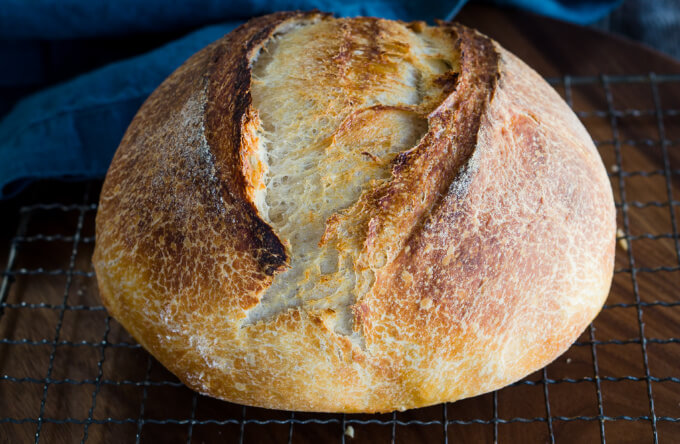
Overnight Sourdough Bread recipe is the perfect recipe to learn baking with a sourdough bread starter. Our step-by-step instructions and video will have you creating an amazing loaf of bread at home in no time.
This Sourdough Bread recipe couldn’t be easier to make and it’s a lot quicker compared to other sourdough bread recipes from starters.
This 500g homemade sourdough recipe has a tender crumb with a slightly sour flavor surrounded by a beautiful crisp crust that has that pull you want in artisan bread.
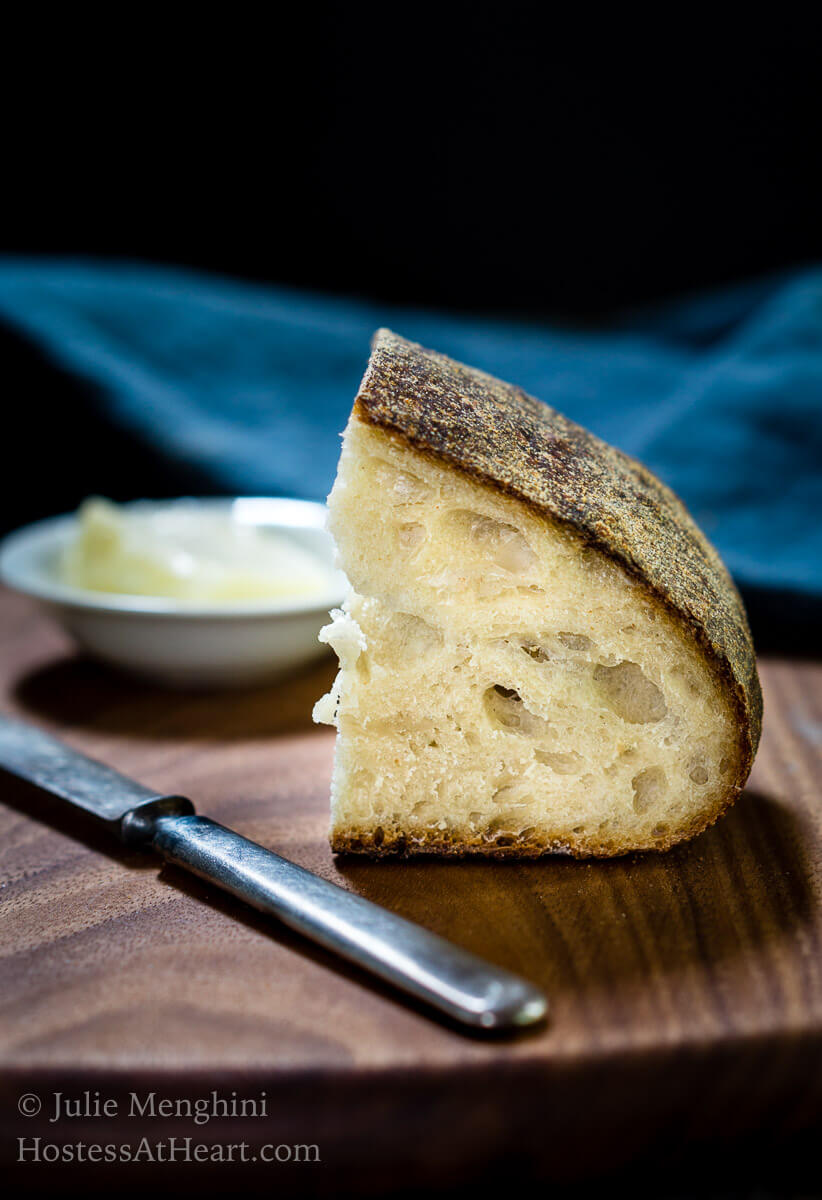
Hello, Julie. Just wanted to say thank you for sharing your overnight sourdough recipe as it really works well for me, a lot of people have shared their methods and this one is simply the best one I have come across so far. So thank you again!”
Kris T
What is Sourdough Bread
Sourdough bread is made by fermentation of dough using naturally occurring lactobacilli and yeast. Sourdough bread has a mildly sour taste not present in most bread made with baker’s yeast and keeps better than other bread due to the lactic acid produced by the lactobacilli. Wikipedia
What is different about sourdough bread?
The difference is in how they are made. Regular bread is made using store-bought yeast that reacts with gluten, making the dough rise. Sourdough bread is made with a “starter“. This starter is made from a combination of yeast and bacteria growing inside a paste made of flour and water.
Make your own starter!
Need help with your sourdough starter? Our Complete Sourdough Baking Guide covers everything from creating a starter from scratch to maintaining it long-term, plus advanced techniques and troubleshooting.
Health Benefits of Sourdough Bread
The fermentation that occurs from using a starter has been shown to lower blood sugar, be easier to digest and can even be tolerated by gluten-resistant individuals.
However, that’s not to say it is gluten-free. Sourdough bread contains higher levels of folate and antioxidants than other bread. Healthline is a very thorough reference regarding the health benefits of sourdough.
Ingredient Tips:
- Bubbly starter – I recommend feeding your starter and letting it sit out at room temperature 4 to 6 hours or until it increases in volume by about 30% and passes the float test.
- If your dough is runny it can be because your starter was actually starving when you used it.
- Bread Flour – Bread flour has a higher protein content than AP flour. That higher protein provides more structure to your loaf.
- If you substitute, they will both be delicious, and the texture will be the same but you may find the loaf made with AP flour balloons out more or doesn’t rise as high.
- Water – There’s a lot of controversy regarding water in bread making. Some experts say if you can drink it you can use it to bake with. Other experts say the chlorine can inhibit yeast activity.
- Mineral content (hardness) can reduce extensibility (elasticity and ability to stretch) of the dough.
- Salt – I use fine sea salt. It is easier to incorporate and dissolve than a coarser salt.
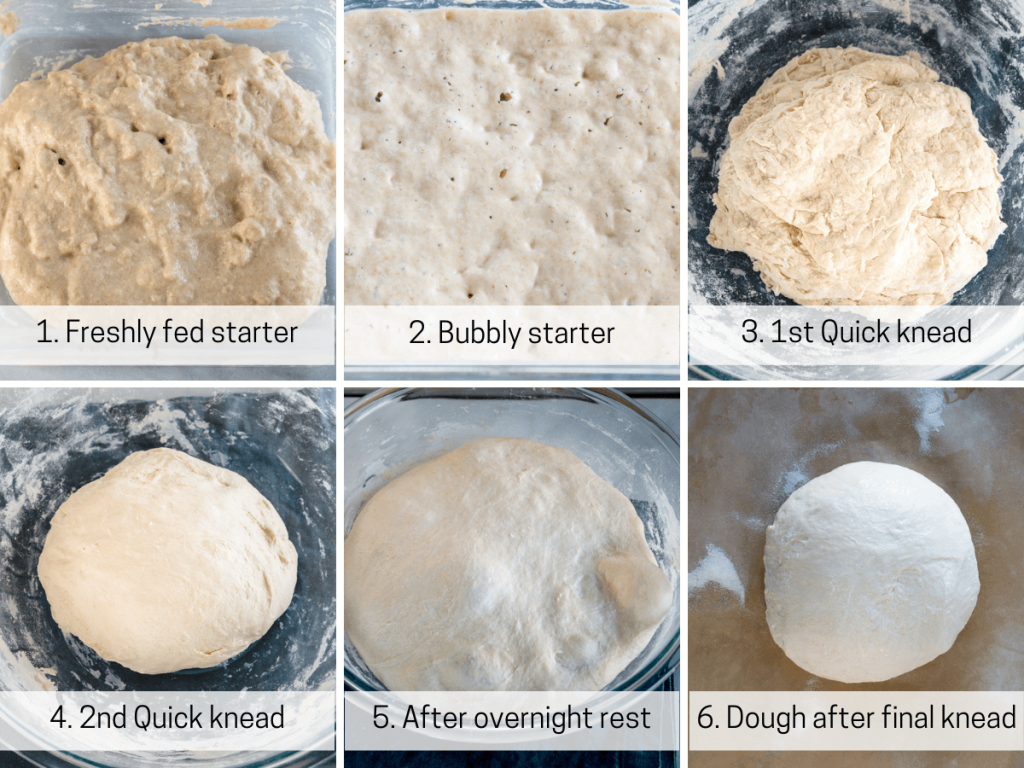
The above pictures from top left to bottom right.
- The freshly fed starter is thick.
- The Bubbly starter is ready. when bubbly and passes the float test.
- 1st quick knead just to combine ingredients (about 1 minute). The dough is thick and heavy.
- 2nd quick knead after a 30-minute rest. The dough is softer and smoother.
- Dough after 8 hours is full of air bubbles.
- Dough after final delicate knead is smooth and silky.
Absolutely! We love adding dried fruit such as apricots or cranberries, chopped nuts, cheese, olives, or herbs such as rosemary or thyme.
We recommend that you start by adding no more than 20%. So for this 500-gram loaf that would be
500 x 20% = 100 grams. You shouldn’t have to adjust your baking time.
Be careful that you don’t add a lot of moisture. Semi-hard cheeses such as cheddar shredded or diced into smaller pieces work well. Drain fresh fruit or olives of excess juice.
Sourdough Baking Guide is a comprehensive resource covering starters, fermentation, shaping, scoring, troubleshooting, and advanced baking methods.
Recipes using a bread starter
- Multi-Grain Wheat Bread Recipe
- Spelt Sourdough Bread
- Sourdough Sandwich Bread using Bread Starter
- Multi-Grain Wheat Bread
- 750gr All-Purpose Flour Sourdough.
Pro tips for Overnight Sourdough Bread
Resting times
Want to save this recipe?
I'd like to receive more tips and recipes from Hostess At Heart!
Don’t let bread rule your life! Here are some resting times that may help you to bake according to your schedule
- Counter rise – Written as is, this recipe has a counter rise of 3 to 8 hours. I’ve shaped it and let it rest in a banneton or you can carefully shape it just before baking it. The rise time is variable. If you have a warm kitchen, it may be ready sooner. Press your thumb into the dough, and if it bounces back slowly, it’s ready to bake. If it bounces back quickly, it needs a little more time to rise. If it stays dented, it’s probably over-proofed.
- Refrigerator proofing – If you don’t choose to bake your bread at the 3 to 8 hour counter proof, we recommend a 90 minute to 4 hour counter proof. Shape the dough and place it seam-side up into a banneton basket or a bowl lined with a kitchen towel that’s dusted with flour. We like dusting ours with a 50/50 mix of wheat flour and rice flour. We’ve actually left our bread in the refrigerator for up to 18 hours with no problems.
- When you’re ready to bake, remove the shaped dough from the refrigerator and let it sit on the counter while your oven preheats. Place it in the dutch oven, score it, and bake as usual.
If you do the full counter proof and then refrigerate the dough, it will be over-proofed. For that reason, try a much shorter counter rise and then refrigerate it.
More helpful tips
- Feed your starter earlier in the day. When it’s bubbly, do the test float. If it’s runny, it’s used up all its energy and needs to be fed again before you can use it. To see if your starter is ready, put a small amount in a bowl or cup of water. If it floats, it’s ready!
- Your bread can be cooked in a cold Dutch oven but I like the color and oven rise I get from preheating my lidded pot.
- To properly bake the bread we rely on an instant-read thermometer. The bread is finished baking when it reaches an internal temperature of 205ºF to 210ºF.
- This bread freezes beautifully. I wrap it in plastic wrap or a ziplock bag and then heavy-duty foil.
- Each time you bake, we keep a notebook and write down anything we do differently such as resting time, baking time, or adding additional ingredients. It’s so difficult to remember what worked the best unless we can look back and see what we were happy about or wanted to do differently the next time. This will also help you to determine what resting times work for you.
YOU MAY NEED
The following are affiliate links. Hostess At Heart is a participant in the Amazon Services LLC Associates Program, an affiliate advertising program designed to provide a means for us to earn fees by linking to Amazon.com and affiliated sites. You can read my full disclosure.
6 Quart Enameled Cast Iron Dutch Oven. – I love this Dutch oven. I have three that are triple the price of this one and it’s my favorite. It bakes my bread perfectly and makes a mean ragu recipe.
Zatoba 1003 Black Walnut Bread Lame Decorative Dough Slasher, 2x2x8 inches – I started out with a lesser quality lame and while this one isn’t expensive it’s definitely better quality and has made a prettier slash in my dough. You can also use a sharp knife.
Instant-read Thermometers aren’t just for meat! I use them to know when my bread is baked. I bake until I get an internal temperature of 205º F to 210º F or anywhere in between.
I have two books (out of several) that I’ve learned so much from. I recommend them exclusively to help in your bread experience. They are easy to read and will help you get that beautiful loaf on the table!
This is a 500gr loaf of bread which isn’t large. Baking bread is all about percentages. If you want a larger loaf, you can adjust the “Servings” in the recipe card and it will calculate your ingredients. (Thank you, Daniel, for this question!)
I hope you enjoyed this delicious recipe as much as we do. Drop me a comment below, and don’t forget to give it a star rating. ⭐⭐⭐⭐⭐. Your comments and ratings help others decide if this recipe is for them too.
Conversions are listed below the recipe card
Conversions for Overnight Sourdough Bread recipe
We realize that many of you aren’t comfortable using a scale. The closest conversions are the following.
- 4 cups flour
- 1 1/4 cup water
- 2/3 cup starter
- 1 1/2 tsp salt
A disclaimer is that I’ve never made this recipe without weighing the ingredients so I can’t guarantee or possibly troubleshoot any problems you may have with the recipe.
If you like this recipe you may enjoy these too
- Homemade Crusty Bread recipe
- 6 Ingredient Simple Classic Italian Bread Recipe
- Soft Buttermilk Sandwich Bread
- Simple Ciabatta Bread Recipe – Made 2 Ways!
- Spiced Apple Star Bread
This bread was made possible by the resources and recipes shared by Elaine, Selma, and Celia! Please visit all three of these blogs for amazing bread information!
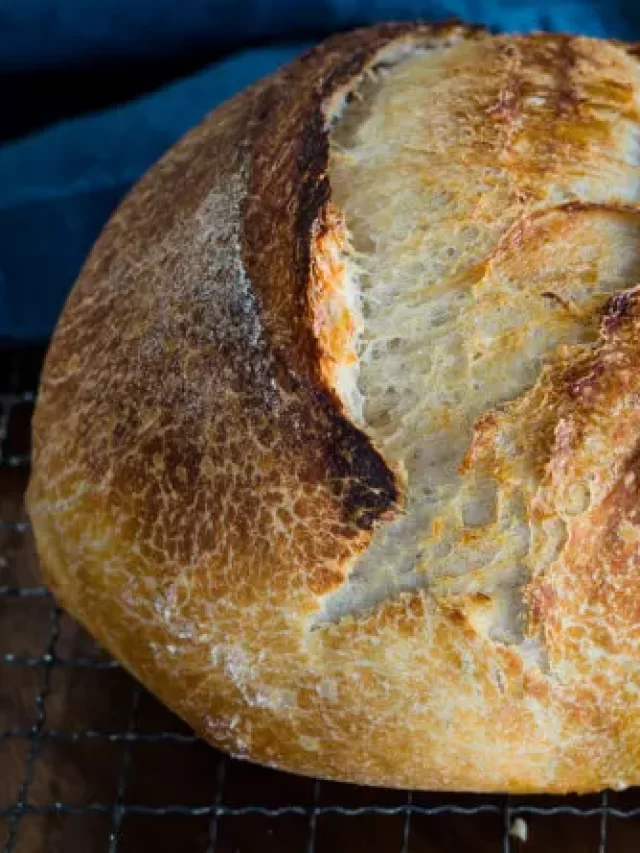
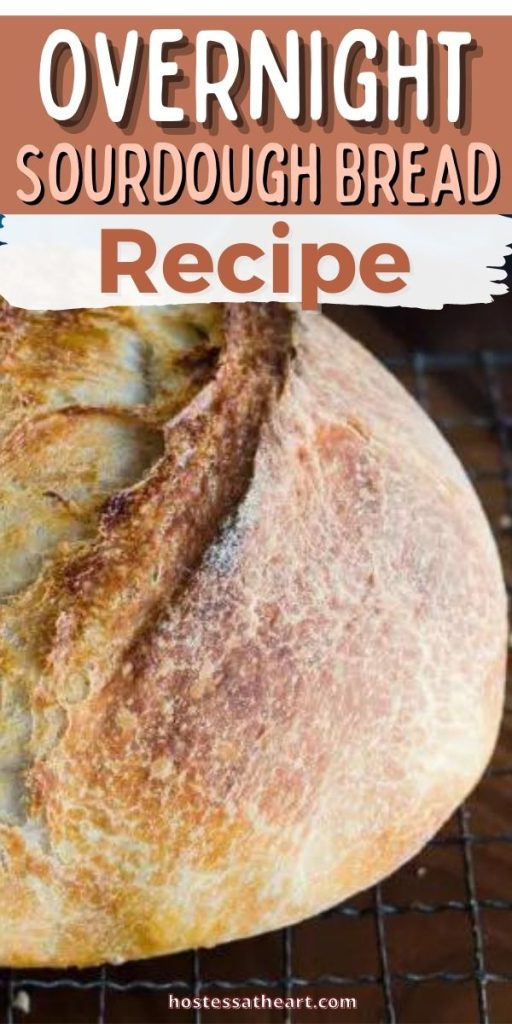
Did you enjoy this recipe? Don’t forget to pin it for later and follow me on Pinterest for more delicious recipes like this one!

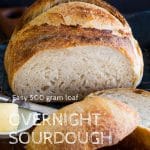
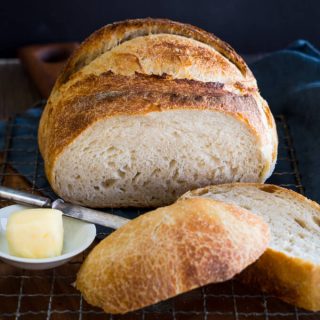
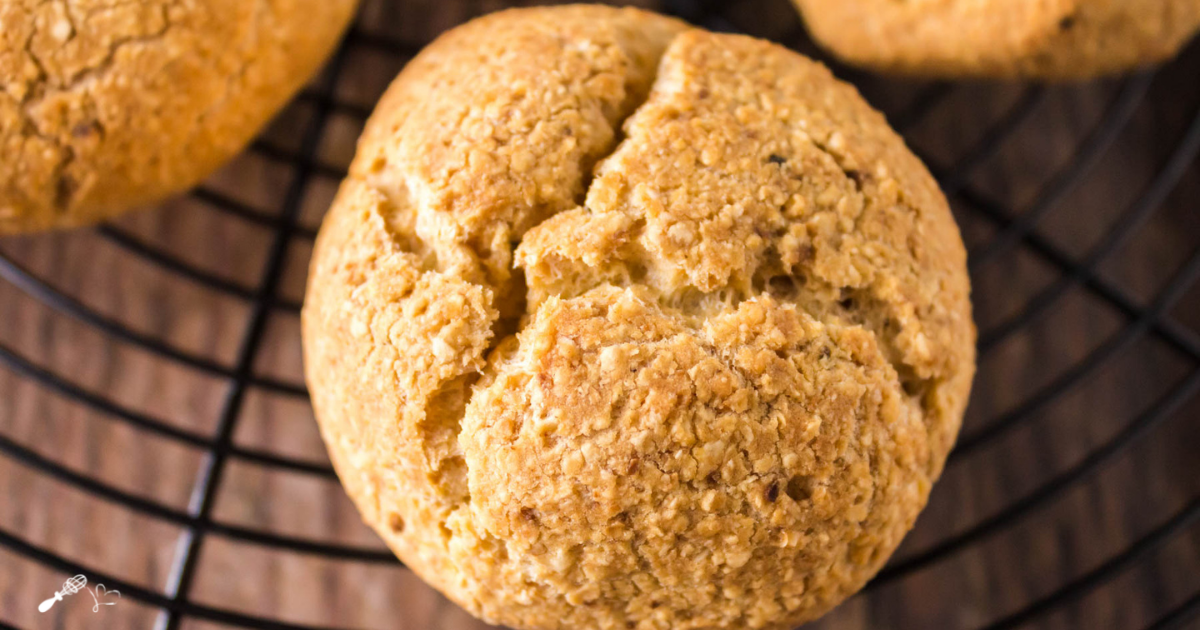
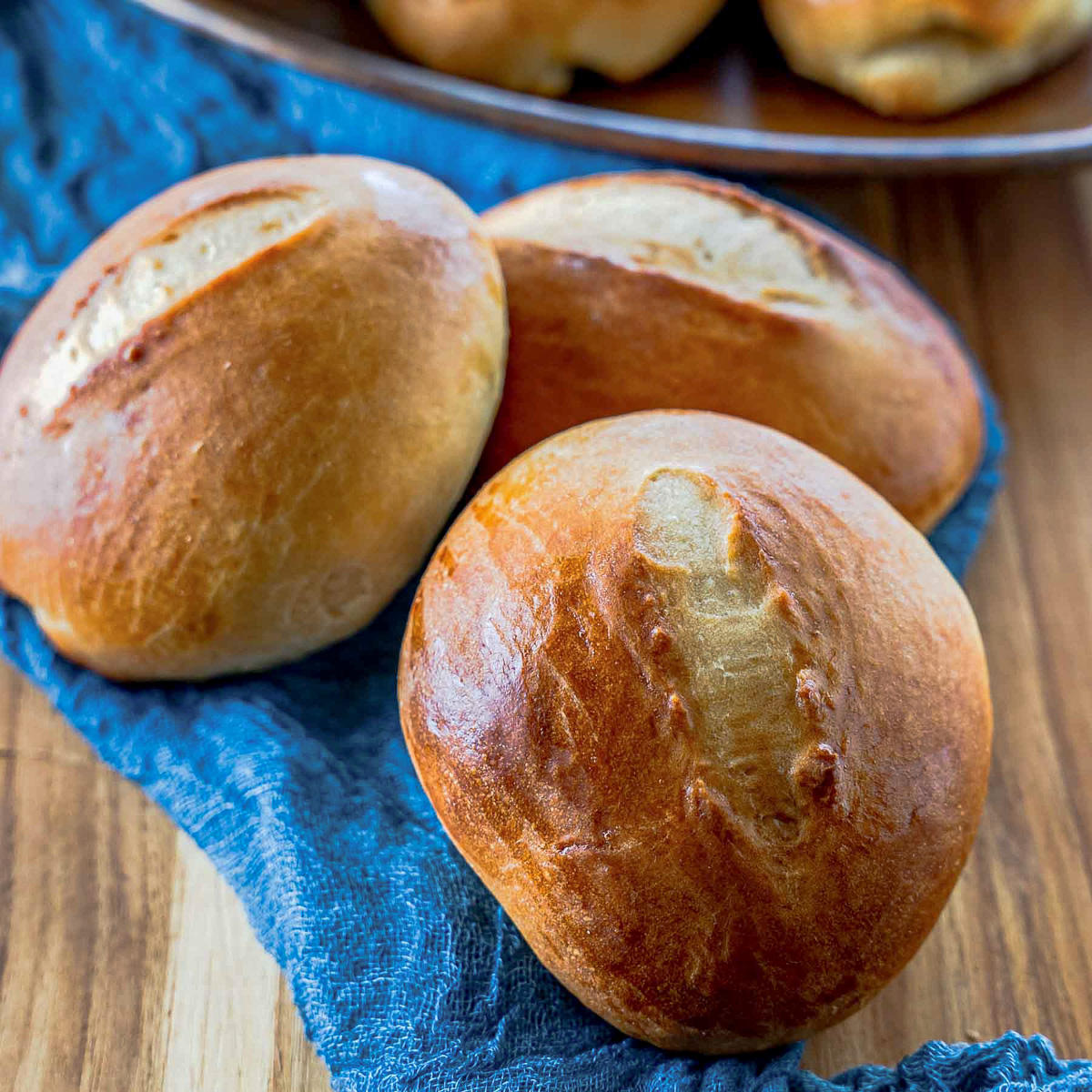

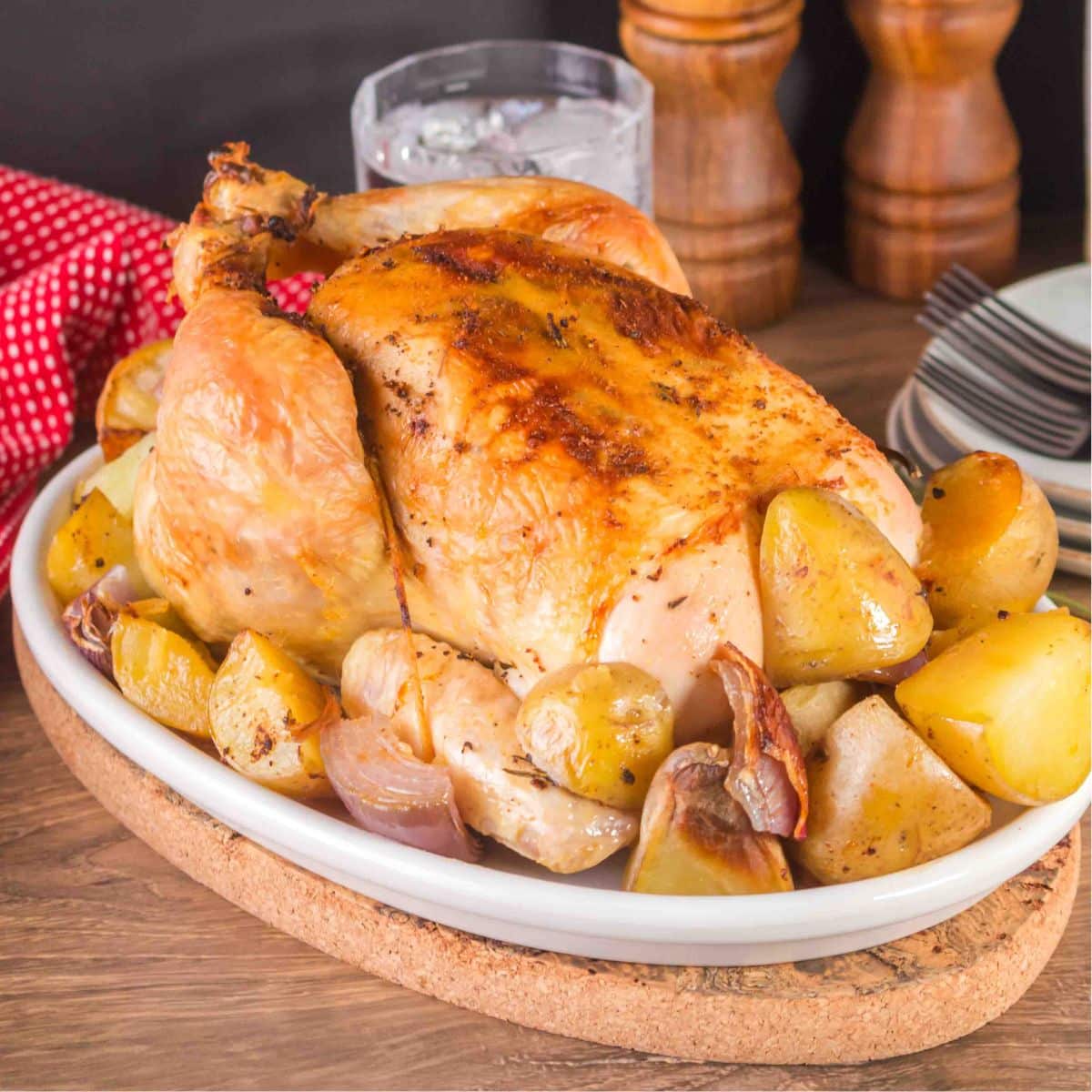
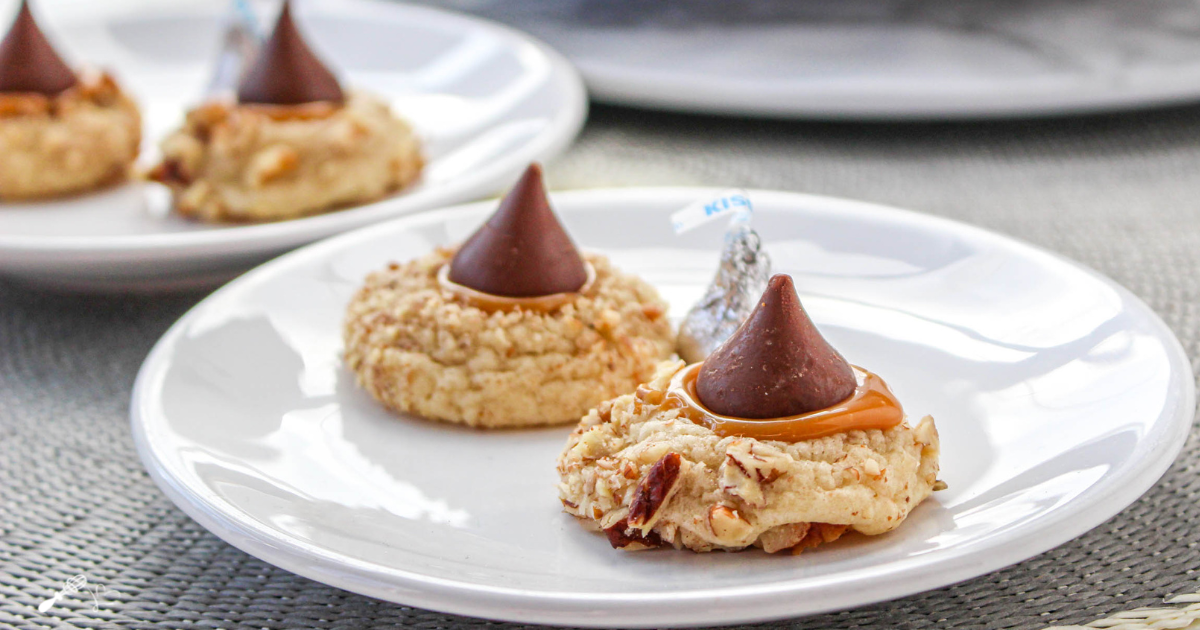
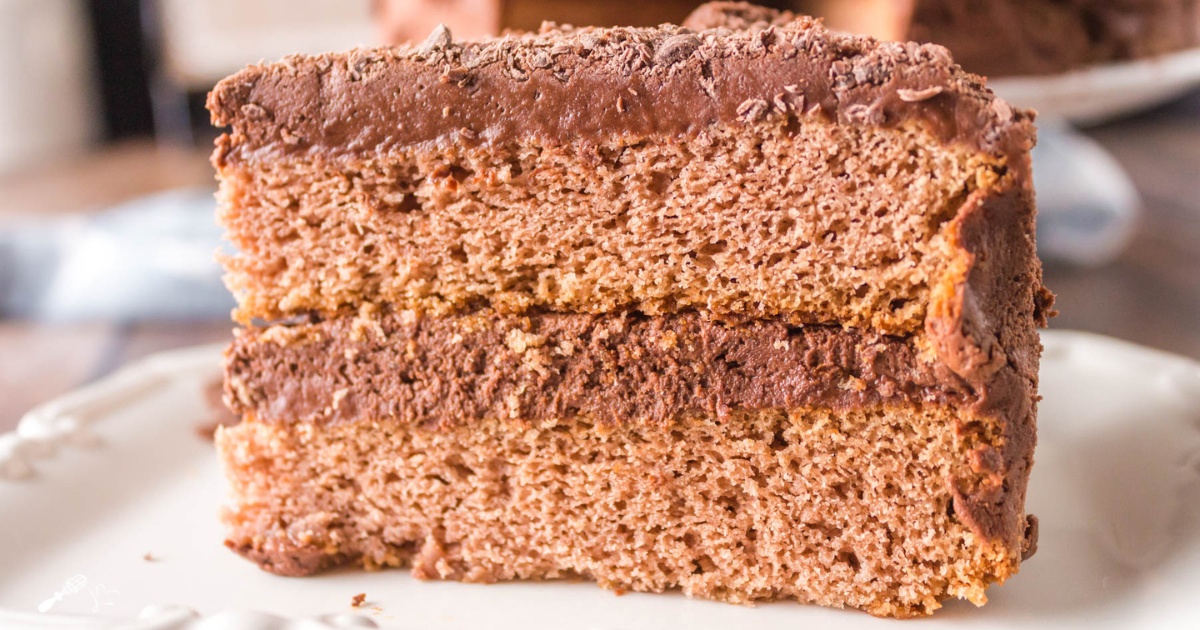
I have been having a blast baking my own bread. This is happening next!! Sourdough is my FAVORITE bread of all — I can’t WAIT to try your recipe!!
Thank you, Michaela!
This looks great! I recently killed my starter, after years of neglect too! Oh well. I do love fresh bread!
PM me your contact info. I’m drying some this week for Debra and I’ll send you some.
Sour dough is my all time favorite. Love the tangy flavor of a good loaf! This looks great!
Thank you, Kylee!
Sourdough bread is one of my favorite, but I’ve never made it at home. Thanks for the step by step video, I think I have enough confidence to make this myself!
I really dragged my feet jumping on the sourdough bread wagon but so glad I did! Thanks, Sandra!
Dang it! I’m about two years late to get that starter, huh? I definitely am up for making this bread. Your step by step video helps me visualize the process. Can’t wait to give this a try! Now…. must find starter!!
Not at all! I’ll be glad to send some to you. Just pm me your contact info and Phoenix will make her trip!
I love homemade bread and sourdough is one of my favorite breads! Cannot wait to try this recipe.
Thank you, Kathy! We really love this recipe!
Wow nice Breads Julie! I think it’s so tasty. How can i get this?
Awesome Rita! Please send your name and mailing address to hostessatheart@gmail.com Thank you for reading!
Just started experimenting with sourdough, and this is my favourite recipe so far! The overnight rise makes it far more achievable than recipes that spend hours stretching, proving and turning. The bread had a great flavour and texture. Many thanks, will make this again.
Thank you for letting me know Holly! I really like this method too and after experimenting this really is my favorite method. I think the overnight proof develops a much better flavor too.
I used this with my wild homemade starter and it turned out great!
Thank you, Caitlin! I’ve been baking a lot more bread using the wild homemade starter. Do you have a favorite go-to recipe?
Great loaf! I actually started with sourdough before using commercial yeast. It looked like a fun project so I tried and loved it. But it’s been years since I’ve used my starter. I got too used to the convenience of the commercial yeast and neglected it. I need to try again. Starters are definitely fickle and I hope that the weather here (always hot) won’t cause too much ill-effects.
Thank you! Maintaining a starter is almost like having children. It is fickle and likes attention. I’ve sure got a lot to learn but am enjoying it. I can’t believe how different all of the advice is too. I’m trying to take it all in but I think I need about 50 more years!
Nice loaf! I use a poolish with all of my breads – if the recepe doesn’t call for it, I adapt it. It makes a tastier loaf, and I think the loaves also tend to keep better.
BTW, how can I find out more about the bread bakers’ group?
Never mind. Found your link. Thanks!
Jeff, you need to join this group! It’s up to you each month whether you participate or not and there is a wealth of information among the members. This bread was really a learning experience and I’ve been experimenting. It took me forever to get on the artisan bandwagon even though it’s my favorite variety of bread.
Yay! You finally made some sourdough bread and it looks beautiful! It really is not hard… You just need to give your starter some attention; feed it and use it. There are a lot of other recipes you can use your starter in; waffles, biscuits, cinnamon rolls, and even desserts, etc. I just finished making a delicious sourdough chocolate cake that provides flavor but not the sour you get in bread (I will post soon). KAF is a great source for recipes/ideas and I know you like to use their recipes. Good luck Julie… 🙂
Thank you Judi! I’ve made about 4 versions and really need a lot more experience. The problem is that there are so many opinions and advice that I need to just find what works best for me. I also hate throwing out mature starter!! I can’t wait to see your chocolate cake! I’ll head over to KAF and see what they have going on. They are always a great source.
Don’t throw it out – make waffles or pancakes for John 🙂
Oh, Judi, I’ve been baking bread like a CRAZY girl trying to figure out all of the different bread methods only to discover I can’t like long enough to figure them all out! I’ve got to make waffles for John. He’ll love them!
BREAD LOVE!
Thank you, Debbie!
Wow what a gorgeous loaf of bread that is Julie. Love the crust and the beautiful crumb.
Thank you, Pavani! This was a great challenge that pushed a lot of us into serious bread baking.
Wow Julie I fallen in love with the loaf. Its so beautiful. If your first attempt is this good then eagerly waiting for your other sourdough bakes. Also like your idea of scheduling your calendar for classes and topics to read up. I should do that. Create a calendar for all the things I need to do. Karen made many of us take the plunge with the sourdough 🙂
Thank you, Mayuri! I’ve got a long way to go to learn this beast and am very thankful to Karen for pushing me over the edge. I have to have a calendar otherwise I swear I have ADHD. I run around with all of these ideas and get nothing done. Also, if I schedule learning opportunities I’ll do them but not take on too many of them.
That is one beautiful bread!
Thank you Mimi! I’m hoping to get a lot more comfortable using pre-ferments and live yeast.
It did make a pretty loaf, Julie! Your victory inspires me to review my list of things I’d like to do (especially the items that have been hanging around on there awhile)!
Thank you Patti! I made one last night that was much better but I still don’t have a lot of experience or confidence in sourdough. I’m going to stick with it though because it will only get better. Enjoy your day sweet girl!
Loving all of those nooks and crannies and that crust! On to the next challenge as you have this one mastered!
You are too sweet! I definitely have a lot to learn when it comes to sourdough but I’m on my way. That’s the hardest part of anything…getting started!
Wonderful looking sourdough, no one would believe you are a beginner. I do have a question regarding this instruction:
Pull the outside thirds into the middle and shape as you wish. Try to pull the outside of the dough as tightly as possible so it will hold its shape well.
Don’t you end up with a crease in the middle of the loaf? Thanks.
Thank you! Great question Liz! At this point the dough is not as dry as other proved doughs so it sticks together much easier. After you have a nice tight skin you turn it over so the ball sits on the creases. I also apply a bit of pressure to the sides and turn it slightly at the same time which I think helps smooth out the bottom.
Thanks Julie, I have some starter in my fridge and your method sounds so easy. It is going to be my next project.
So much fun Liz! I’m not an authority by any means. I rely on Elaine (foodbod) to help a lot!
Such a beautiful crumb! My family loves sourdough !
Time to get started!
Thank you! Do you make sourdough Sonal? We love it and I am going to keep experimenting.
That looks amazing Julie! I’m so glad you got to flex some new baking muscles. Your starter can be revived by adding a little rye with the flour btw.
On my procrastination bucket list…. fresh pasta. You’ve inspired me.
Thank you Karen! I actually revived the poor thing with some rye flour. Do you store your starter in the fridge? I’m afraid to put it back in there! Also, I’ve learned that this loaf wasn’t scored deeply enough. I made another one last night that I’m much happier with!
I do keep mine in the fridge. It seems to do fine!
Thank you, Karen!
Well you may feel like a novice but your loaf looks professional.
Thank you, Wendy! So glad that I started experimenting with sourdough!
Wow, that is a beautiful loaf, Julie. You certainly are a fast learner. The crust and crumb both look perfect.
Thank you, Eileen! I’ve been baking bread forever but sourdough is trying to kick me in the fanny. The starter is kind of a fickle thing and I’m afraid I’ll kill it LOL!
Oh my goodness! This bread looks fabulous! Nothing like a good slice of bread + butter, is there?? Pinned! Have a great week 🙂
Thank you, Dawn! Are you a sourdough baker?
Looks like you did a great job!! And now the fun begins…
Oh Elaine, I wish I had your confidence and experience! My starter got sluggish even with regular feedings and I just knew I’d killed it! Now I have one that I fed with rye and it’s hearty. I’ll freeze some of that. Why can’t you be my neighbor so I can pick your bread brain!
Well, I can be your virtual neighbour, just ask away…;)
Starters do like rye flour, it will generate a slightly different loaf from a starter fed with strong white or all purpose flour though, usually a denser loaf.
Definitely keep your starter in the fridge, unless you plan to use it daily or every other day.
Good luck x
Thank you, Elaine! By the way, I had forgotten to give credit for the recipe and technique for this loaf which came from you, Selma, and Celia. I’ve updated this post to reflect that. I’ll be trying to make another starter using strong white starter.
Thank you for including me 🙂
What I would say regarding creating your own starter, they get stronger (and stronger and stronger) with age. You will also end up with lots of excess starter that you need to discard – or you can use to make lots of other things x
I need to build it and get it stronger. Patience….
This looks like a good recipe, it will be the next one I try. A couple questions though.
1) my stater is super runny, any advice on thickening it up? I don’t want to kill it by adding too much flour not enough water and such.
2) have you ever tried this recipe with a combination of bread flour and whole wheat flour? Would it change the amount of flour and water?
Thanks!
Hi Jess! Great questions! Take about 1 tablespoon of your starter and add 100 grams of filtered water and 100 grams of flour. For my flour, I add 50 grams of unbleached flour and 50 grams of wheat flour. Cover it and let it sit out on the counter. Runny starter usually indicates that it doesn’t have enough food. Repeat this every day for a couple of days and see if you can strengthen it. A sure way to give it some strength would be to add a tablespoon of rye flour to your flour mix. Always feed your starter and make sure it’s strong before baking with it. Please email me if this doesn’t work and we can troubleshoot from there. 2. I’m currently experimenting with other flours and use wheat a lot in my breads. I’ll be sharing my findings shortly. Thank you for reaching out!
Thanks so much for your quick reply. I’ll give it a try. Everyday I should take out 1 TBSP and add the flour and water or just take out some the first day and the days after I just add the flour and water?
Hi Jess. I think you should feed it like that for at least 3 days in a row by removing all but the 1 tablespoon as described. These starters get strength the more you use them. Do you get bubbles in your starter after you feed it? I’m trying to determine where yours is at this point.